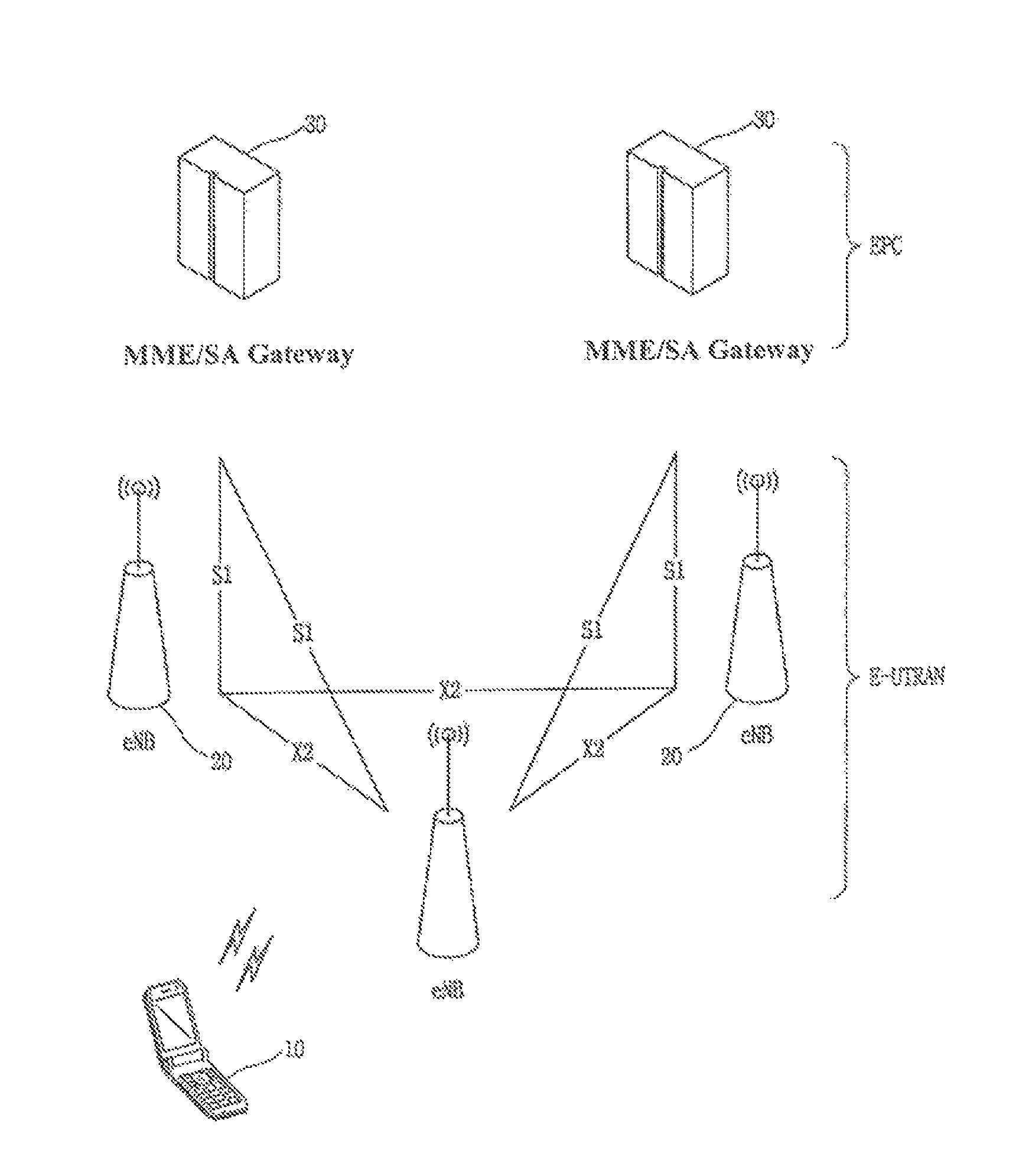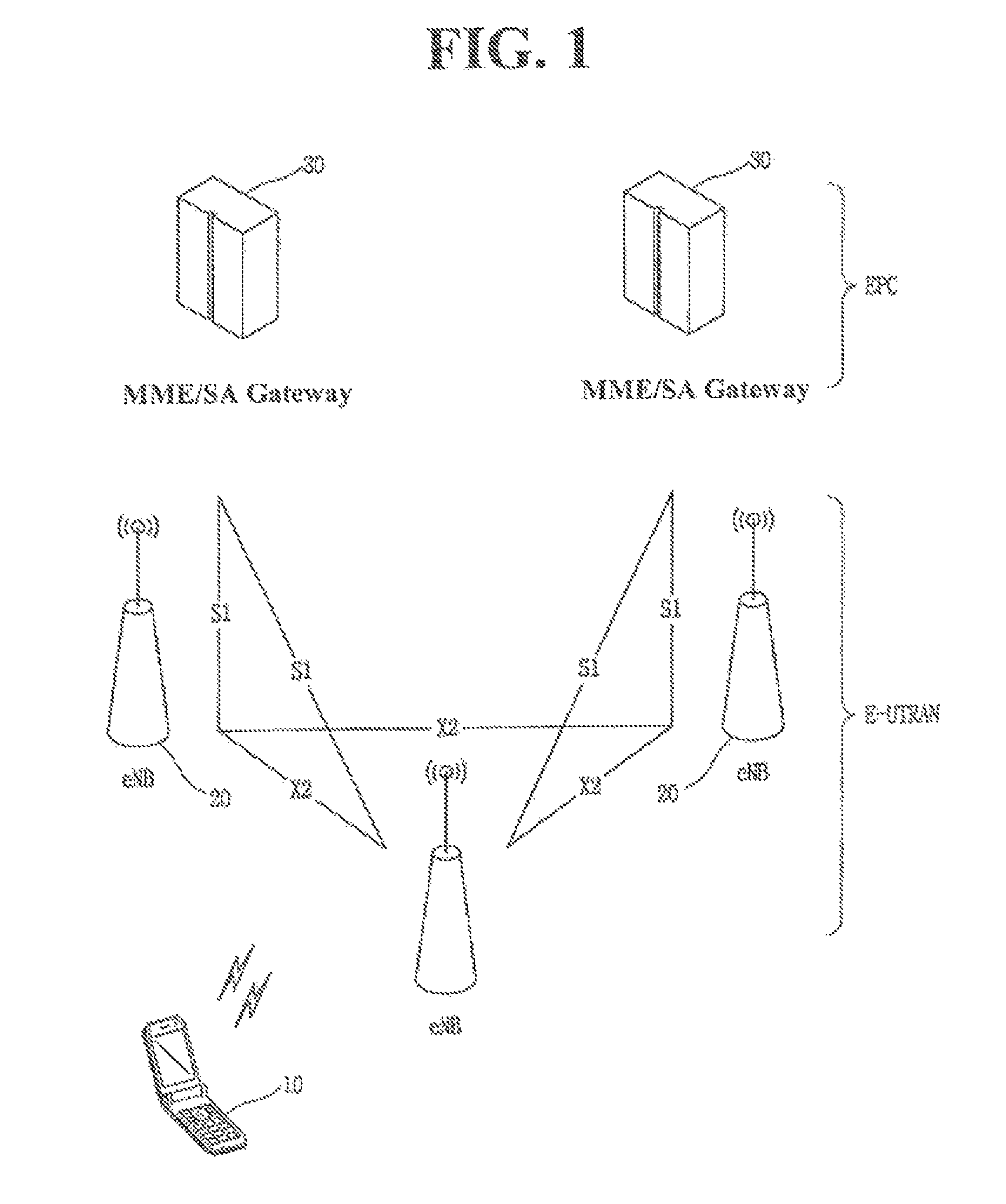PDCP packet transmission method
a packet transmission and packet technology, applied in the field of mobile communication, can solve the problems of large amount of pdcp sdus and data loss at the application end, and achieve the effect of improving the transmission performance of ue and enb and preventing data loss
- Summary
- Abstract
- Description
- Claims
- Application Information
AI Technical Summary
Benefits of technology
Problems solved by technology
Method used
Image
Examples
first embodiment
[0109]FIG. 14 is a conceptual diagram showing a process in which the transmitting side PDCP entity transmits user data disclosed in this specification.
[0110]As the PDCP PDU with the PDCP SN 3999 has been successfully transmitted to the receiving side, the transmitting side PDCP entity receives ACK about the PDCP PDU with the PDCP SN 3999. Accordingly, LastSucceededSN is set to 3999. Subsequently, 2046 PDCP PDUs are discarded by the Discard Timer, but the PDCP PDU with the PDCP SN 1950 is transmitted to the receiving side due to the restriction on MAX_TX_WINDOW_SIZE. At this point, TX_HFN becomes 1. Because the receiving side PDCP entity is branched to ‘Yes’ (Next_PDCP_RX_SN(4000)−received PDCP SN(1950)>Reordering_Window(2048)) in the step 220 of FIG. 9, RH_HFN is changed from 0 to 1, and accordingly the PDCP PDU is successfully deciphered and recognized as valid data at the receiving side application end.
[0111]The transmitting side PDCP entity receives a new PDCP SDU from an upper ...
second embodiment
[0112]FIG. 15 is a conceptual diagram showing a process in which the transmitting side PDCP entity transmits user data disclosed in this specification.
[0113]As the PDCP PDU with the PDCP SN 3999 has been successfully transmitted to the receiving side, the transmitting side PDCP entity receives ACK about the PDCP PDU with the PDCP SN 3999. Accordingly, LastSucceededSN is set to 3999. Subsequently, 2044 PDCP PDUs are discarded by the Discard Timer, but the PDCP PDU with the PDCP SN 1947 is transmitted to the receiving side PDCP entity. However, the transmitting side PDCP entity has not received ACK about the PDCP PDU with the PDCP SN 1947 yet. Subsequently, two PDCP PDUs are discarded by the Discard Timer, and therefore 2047 PDCP SNs, starting from LastSucceededSN+1, are assigned to the PDCP SDUs.
[0114]The transmitting side PDCP entity has to receive a new PDCP SDU from an upper layer, and assigns a new PDCP SN to the PDCP SDU. However, the PDCP SN cannot be assigned until the receip...
PUM
 Login to View More
Login to View More Abstract
Description
Claims
Application Information
 Login to View More
Login to View More - R&D
- Intellectual Property
- Life Sciences
- Materials
- Tech Scout
- Unparalleled Data Quality
- Higher Quality Content
- 60% Fewer Hallucinations
Browse by: Latest US Patents, China's latest patents, Technical Efficacy Thesaurus, Application Domain, Technology Topic, Popular Technical Reports.
© 2025 PatSnap. All rights reserved.Legal|Privacy policy|Modern Slavery Act Transparency Statement|Sitemap|About US| Contact US: help@patsnap.com



